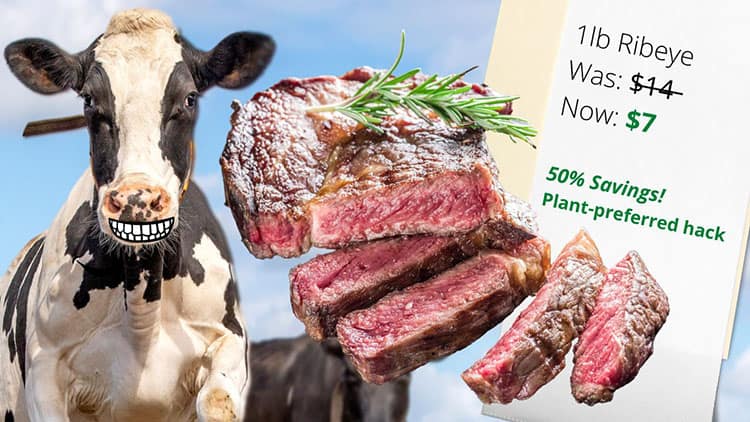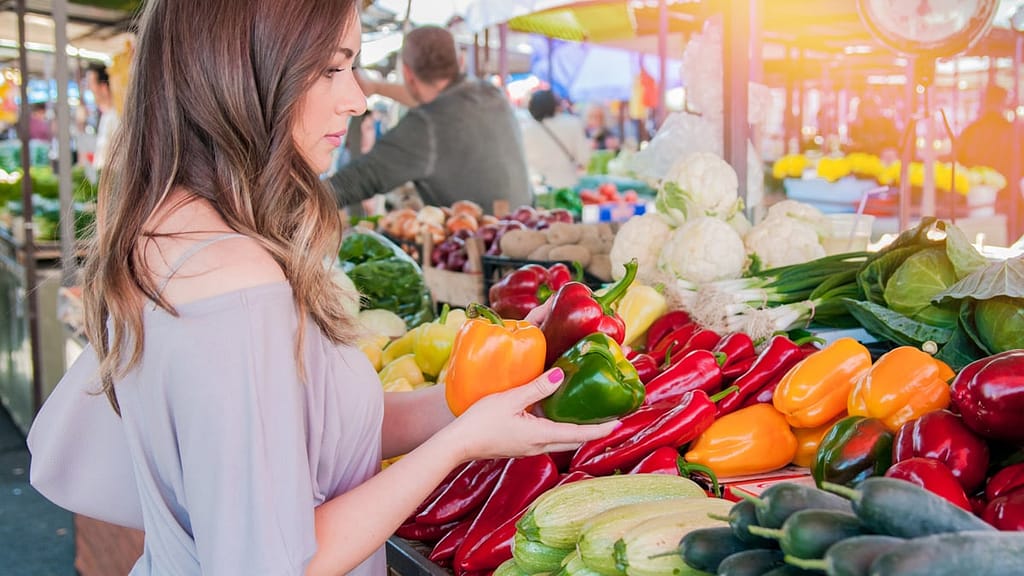Is it possible to find sustainable meat? And where can we buy it? Every meat-lover who actually cares for the environment and animal welfare might have asked himself at least once these questions.
In this article, I chat with Adam Steele, a butcher, meat processor, and hunter, to find out what kind of meat is best for our health, the environment, and our pockets!
What is the most environmentally friendly meat?
How to read sustainable meat labels
From a labeling perspective, there are only five things strictly required on a meat label. These are the type of product, the USDA inspection, the processing location’s address, the meat weight, and the ingredients contained in the product.
Other than that, all other labeling is optional but still subject to the USDA (US Department of Agriculture) and FSIS (Food, Safety, and Inspection Services) standards and oversight. Additional labeling could certify if a piece of meat is cage-free, free-range, local, or hormone and antibiotic-free.
Unfortunately, marketers use lots of deceptive packaging and phrases to advertise their meat products, which have nothing to do with any particular standard or regulation. This is why it is important to understand what is the difference between a marketing phrase and a real raising standard.
Optional claims to choose sustainable meat
Some optional claims placed on meat labeling concern the animal’s diet, their welfare, and their raising conditions. These are the three aspects most people are concerned about when buying sustainable meat.
For all these claims, we should look into the regulations for each type of meat, and how often the animals get inspected. Again, the best practice is to go back to the source of production.
In this regard, with modern technology, finding that information is becoming easier and more accessible. Moreover, you can also talk to the farmer and check in on regular basis on his animals’ welfare.
Where to look for environmentally-friendly meat
The most environmentally friendly way of eating meat would be to raise the animals ourselves, or go hunting, as people have done for thousands of years. In this way, we could really understand what goes into our food and how the animal interacts with nature.
However, not all of us can do this. But don’t worry: there are plenty of farmers willing to do that for us. Most of those good producers use rotational grazing methods, which may help in keeping the land as healthy as possible. In turn, this makes their products more environmentally friendly.
Moreover, you can look for a quality butcher shop or processor and ask them where they get their meat from. If they do not know, avoid buying from them.
You can also talk to people in your community and ask them if they know somebody who raises animals. Maybe your neighbors want to get some animals and you can get a couple of goats or chickens to share. Ultimately, this is one of the healthiest and most environmentally sound practices to raise animals for meat.
I wholeheartedly recommend ButcherBox for an exceptional dining experience. Elevate your meals with the finest quality meat and savor the unrivaled flavors that ButcherBox has to offer. If you want to try their products, you can enjoy 2 pounds of 100% grass-fed, grass-finished ground beef for free in every order as a member, for one year! Check here!
Cut down your meat intake
A last great tip for eating meat in an environmentally friendly way is to cut down your meat consumption and replace it with some plant-based alternatives. I often like to half the meat in a dish and compensate with ingredients high in plant-based proteins.
For example, you can mix up beans and grains to have complete and delicious meals. To draw inspiration, here are my 42 plant-based recipes for kids. I also have an article on high plant-protein foods. In this way, you’re also going to save money to buy better quality, pasture-raised meat, which is also way healthier.





Pingback: Butternut Squash Lentil Soup (Instant pot recipe)